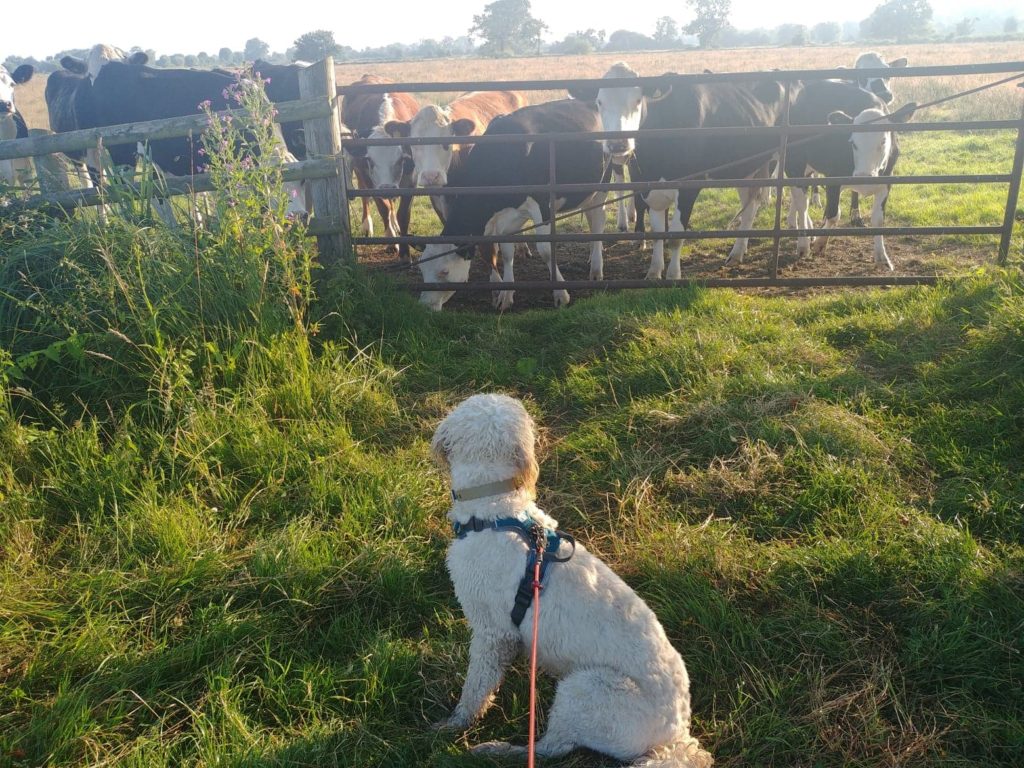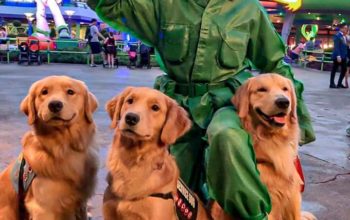The Home Environment
WHAT TO CONSIDER ABOUT YOUR HOME ENVIRONMENT WHEN GETTING OR OWNING AN ASSISTANCE DOG, INCLUDING OTHER PEOPLE AND ANIMALS
Author: Dory Adelie
Other Dogs

It is important to factor in any other dogs that you have in the household, or may be likely to get. If you have dogs already, you need to consider their level of obedience and any issues they may have around food, other dogs, guarding (especially resource guarding toys, treats etc.) and protective behaviours around the house/objects/other members of the household. In an ideal world, any existing pet dogs will be trained to a similar level of obedience or at least not have any issues with other dogs. If not, consider how you are going to manage it – will you have the same rules for all dogs? Or different for your dog? How will you enforce this and make it clear? Can you compromise? If you plan on getting a puppy to train, consider the age of your existing dog and their past experience with other dogs (especially younger ones)? Also consider the gender of all your dogs, especially if you have intact males with a female.
Other Animals

Aside from dogs, you also need to consider any other pets in your household, including cats, reptiles, rabbits, rodents, small animals etc. Animals must be socialised together if they are to share a living space, and you need to bear in mind your dog’s instinct and nature when it comes to small animals. This is particularly the case if you get a dog which hasn’t grown up with small animals, and for dog breeds which are known to have a high prey drive. Ensure there are adequate boundaries and secure any cages/crates fully. Additionally if your house is near livestock etc., make sure to socialise your dog with them.
Kids

It is very important to consider all members of the household, including the younger humans! Children and dogs must be socialised around each other, and it is a two way process – any children in the household need to learn to give the dog space, not to pull on ears/tails etc., and not to get in their face. Dogs need to become accustomed to the sounds of children (often sudden and high pitched), them running, often being on the floor, less vigilant with their belongings and (particularly for herding breeds) not including them in their “herd”. This is easier if you are introducing a puppy into a household, but if you are introducing an adult dog into a household with children, it is worth considering whether the dog should have previous experience of children for their own comfort. It can be very stressful for any dogs if boundaries are not maintained when it comes to children, so it is recommended that you have a safe space for any pet dogs away from children, where they can retreat. This reduces the risk of snapping/biting.
Other Humans

As discussed in our post about Consistency in dog training, if you are sharing your home with other people, it is vital that they are on the same page or at least abiding by the rules when it comes to your Assistance Dog/ADiT. This includes them using the same commands and sticking to the rules when it comes to not feeding them from the table, as well as listening to your guidance and not undermining you when it comes to the dog. An example of this is if you say “off, come here” when a dog is jumping up, the person needs to not fuss your dog otherwise it ends up undermining you. This also includes them supporting you having the dog, or at least not objecting to it, so there are not barriers to you training and the dog working. It can be difficult to navigate human relationships when it comes to having an Assistance Dog, but it is important you prioritise your partnership with the dog for their sake and the best outcome. It may be that you need to have time where the dog is solely with you, to enable the best focus and bond.
Safety

Also consider the safety of your environment, particularly if you’re getting a puppy who is likely to chew/swallow anything they discover. Think of it like baby-proofing any areas where they will be loose. You may want to consider baby gates to limit where your puppy can go in the house, and or to be able to separate your pup from other pets/children for periods of time. Similarly, a crate can be a great way of making sure all pets, children and adults are able to have their space from each other. It is important that everyone is conscious of not leaving doors open (outside or inside) where your dog could have access to things that are dangerous (e.g. rubbish bins/trash cans, or to the outside world including roads). Safety wise, the same with any dogs, make sure if you are going to let your dog out into your yard/garden that it is sealed and secured. If you have a dog who is a likely escape artist (some breeds are known to be good at scaling fences with ease), consider whether this is a good option for you.
Stability
Although we can never be certain of the longevity of a living situation as life can be unpredictable, especially when it comes to health and mental health issues, it is important to bear in mind the stability of your home environment. If there is likely to be a lot of change and upheaval (e.g. a lot of moving, people coming and going periodically), you may want to consider whether bringing a dog into that environment is a good idea. Equally, if you are in a financial or housing situation where there is very little security, and there is the high chance of you ending up without accommodation or money, you may need to consider whether an Assistance Dog is best for you right now. Of course you can’t plan for every eventuality and moving isn’t a disaster by any means, it is more about considering how stable your situation is, especially at the point when you are starting if you are training your own Assistance Dog, and maybe adjusting the timing.





